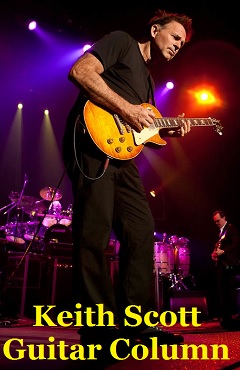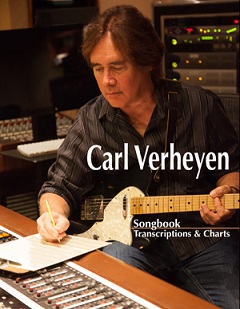Steve Gadd
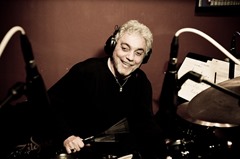
Photo by Rob Shanahan
Paul Simon, Eric Clapton, Peter Gabriel, Stevie Wonder, Chick Corea…the list goes on and on for the countless artists Steve Gadd has shared the stage with and recorded for. Steve is definitely one of the best drummers in the world today.
Along with his musical friends Michael Landau (guitar), Larry Goldings (keyboards), Jimmy Johnson (bass), and Walt Fowler (trumpet & flugelhorn), Steve Gadd released a new album titled “70 Strong” commemorating his 70th birthday. The album displays a superb band ensemble by a group of world-class musicians, along with Steve Gadd’s detailed and dynamic drumming.
Steve Gadd talked to MUSE ON MUSE about his new album “70 Strong” and his approaches to drumming.
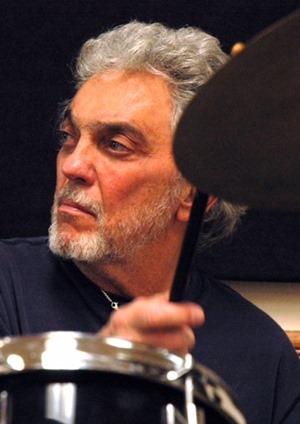
Photo by Steve Singer
Interview / Text Mamoru Moriyama
Translation Louis Sesto (EAGLETAIL MUSIC)
Muse On Muse : Congratulations for your 70th birthday! How does it feel being able to continue music at this age?
Steve Gadd : Fantastic! It’s great, I still get a chance to play music for audiences and feel that energy and play with great musicians who are all my friends…so it’s great!
MM : You have recorded and toured with numerous artists. Which recording stands out the most in your memory and why? Please share any episodes you might have.
SG : No. They are all important to me. You know, I really can’t pick one out over another. The whole journey’s been great and I’ve learned from all the people that I’ve worked with.
MM : Is there anything you do in particular (or keep in mind) in regards to maintaining your long career and the current status/position you have in the music industry?
SG : I always give 100%. I exercise, try to stay healthy, I eat right and try to keep spiritually fit. And love what I do and give it one hundred percent.
MM : You have just released your new album “70 Strong”. What was the concept behind this new album?
SG : Having fun with guys I love to play with. I think that’s what it is…we just wanted to get together and groove.
MM : The album not only is a pleaser for drummers and players, but the remarkable musicality definitely appeals to mainstream listeners too. How did you think out the perfect balance when producing the album?
SG : Having these guys in the band make that happen. I didn’t really think about anything else but having guys that like to make music together. Everything else takes care of itself.
MM : You have the same members as the “Gadditude” album participating on this album too: Michael Landau on guitar, Larry Goldings on keyboard, Jimmy Johnson on bass, and Walt Fowler on trumpet. How is it recording with these members?
SG : It’s great! They’re friends, they’re great musicians and we have a great time together.
MM : How long did it take to record the album? Tell us about the actual recording process.
SG : It took about a week to record. Everybody wrote songs and I listened to them and tried different things and decided what would work best for the album. And we did a couple of covers that we all liked.
MM : All members are credited on “Foam Home” for the songwriting. Tell us about this song.
SG : We all wrote this song together in the studio. We started jamming and came up with that song. And on the Gadditude album we did Green Foam, so…we’re keeping the “foam” motif for songs that the band writes as a group. (jokingly) If you hear another “foam” song on our next album, you’ll know that we wrote that song as a band too!
MM : You have recorded some songs that are originals of the participating musicians. How did you decide on which songs to have on the album?
SG : It was real simple. I listened and decided which songs would work on the album.
MM : You also feature a song by Eddie Harris called “Freedom Jazz Dance”, which is known to be played by Miles Davis. What kind of approach did you take when recording your version of this song?
SG : We combined a few Eddie Harris songs. I’m a big Eddie Harris fan and so are the other guys in the band, so we came up with a combination of a few Eddie Harris songs that we put into one track.
MM : What was the reason behind choosing Jan Hammer’s “Oh, Yeah?” as one of the songs for this album?
SG : I was at a party at Walt’s (Fowler) house and a lot of musicians were there and we were jamming and they started playing this song. Everyone knew it but me and I fell in love with it. As soon as I heard it I thought it would be a great song to play with our band. So we did it. It’s a lot of fun to play always.
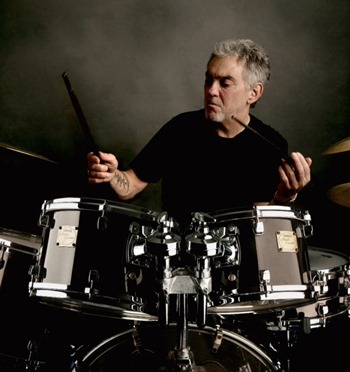
Photo by Bill Zules
MM : “Sly Boots” definitely displays a variety of your technical rhythm approaches.
SG : Right!
MM : When are the moments you feel the most happiness when playing with this band?
SG : All of the time. We’re either having fun musically or joking around or enjoy hanging with each other and our wives.
MM : You play in perfect time while having a great groove, and you continue to fascinate and influence many drummers, musicians and listeners. How did you acquire your current style of drumming?
SG : You have to keep it in the front of your mind and keep working on it. It’s not anything that you learn and then forget about it. You have to be constantly striving for it.
MM : From your perspective, what do you consider as a ‘good drum sound’ in a band ensemble? Is there anything you keep in mind while you’re playing, technique-wise, to get a good sound out of the drums?
SG : I think that years of practicing and trying to hit the drum correctly, you know the way I was taught as a kid and constantly trying to apply that balance. That technique becomes second nature, not anything that I think about…you know what I mean? It just sort of happens automatically.
MM : Do you have any advice and/or a good practice method to develop a good sense of rhythm, which is essential for all musicians?
SG : I think it’s good to practice with a click or if you have a drum machine with a programmed feel and they should be able to use headphones that block out the sound of the acoustic drums in the room like Vic Firth’s headphones. They have to be able to hear what they are trying to play with louder than themselves. And they have to practice playing with those references for times, set it at different tempos, different feels, try playing 8 bar phrases and playing fills at the end of the phrases and then they’ll start to understand how the time fluctuates when they change what they’re doing.
MM : I’m sure strength and stamina is an important part when it comes to playing drums. Is there anything you do to maintain your physical condition?
SG : Exercise. I try to jog everyday or at least 4 or 5 times a week. I think that’s really important.
MM : Tell us about your gear. What kind of kit did you use for the recording? What snare(s) did you use?
SG : I used the Steve Gadd metal snare. I used one birch 13” Steve Gadd snare on Foam Home. And then I used the Steve Gadd Yamaha custom kit with the 20” bass drum and 12, 13,14 and 16 inch toms.
MM : What do you have coming up next? Tell us about your upcoming schedule.
SG : We’re doing James Taylor promotional concerts in New York in a couple of weeks. Then the Steve Gadd Band is doing the Rochester International Jazz Festival. Then continuing with James Taylor until August 6th. Steve Gadd Band is touring Asia in September and Europe in October and November.
Steve Gadd official site : http://www.drstevegadd.com/
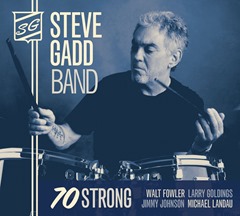
STEVE GADD BAND / 70 STRONG
1.Foam Home
2.Freedom Jazz Dance
3.Written in Stone
4.The Long Way Home
5.Sly Boots
6.Duke’s Anthem
7.Elegant Squares
8.Desu
9.De Volta Ao Samba
10.Oh, Yeah?
11.Blues For…
Steve Gadd – Drums
Walt Fowler – Trumpet, Flugelhorn
Larry Goldings – Keyboards, Accordion
Jimmy Johnson – Bass
Michael Landau – Guitars
